Two years ago, we interviewed Martin Feder on the evolution of building management in times of IP, IoT, and the shift of intelligence to the edge. Technologies are evolving fast while customer demands keep changing. Consequently, smart building system integrators must transform their businesses in order to adapt and stay ahead amidst rapid shifts.
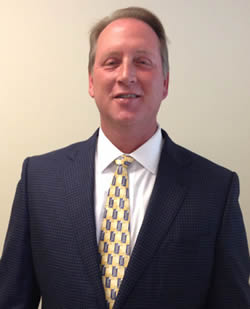
Now, it is time for a new interview in which Martin Feder is joined by Jeff Groat. Martin is responsible for the BMS Certification of Schneider Electric’s EcoXpert channel partner program. Jeff is an executive at Ohio-based Wadsworth Solutions, a building automation integrator and solutions provider for secure, energy-efficient environments that transformed its business by future proofing its offerings to better help clients who need state-of-the-art solutions.
According to Martin and Jeff, we have reached an inflection point at which companies, manufacturers, and integrators in the building space better get ready for change because traditional skills and models won’t cut it anymore.
Discover what Generation Z, 5G, edge computing, massive data, changing customer needs, and evolving consumer expectations have to do with the vital role of building management and master system integrators as we enter a new stage of digital acceleration in buildings.
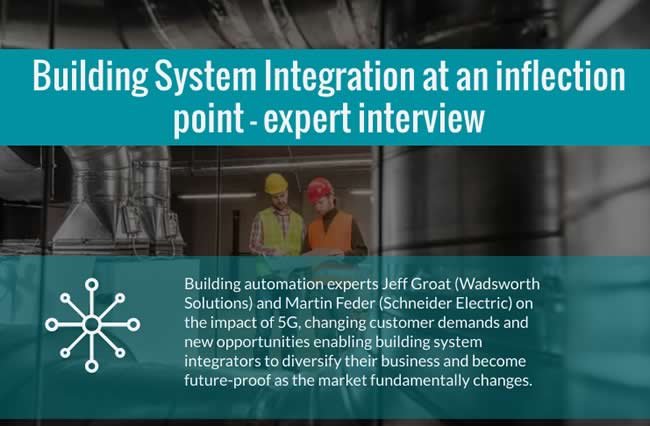
Moving up the value and profit chain closer to the customer: How a Master level BMS EcoXpert transformed his business
Jeff, you are Executive VP at Wadsworth Solutions, a Master level BMS EcoXpert building systems integrator. Before that, you worked on the vendor side. Can you tell us more?
Jeff Groat: From 2004 until early 2013, I was a Schneider Electric regional manager in the building division. During my tenure, I was responsible for 17 states and had approximately 40 partners.
If you’re not a building systems integrator and, for instance, consider yourself a temperature controls contractor, you won’t be around in five years (Jeff Groat)
My job was to work with them, develop the go-to-market strategy, and occasionally do smaller tasks, including tech support. I spent most of my time trying to convince building automation companies to move in the right direction. After having been in that role for eight years, I decided to practice what I had been preaching and went to the partner side.
Wadsworth went through an impressive transformation. Starting with a customer-centric view, the company moved away from traditional models in the industry. Why was that needed?
Jeff Groat: When I joined, approximately 80% of our business came from the bid spec market, and some of our groups—such as the security group and data center group— were underdeveloped. We decided to make the whole business operation more sustainable.
The only way to achieve this transformation was to get our business from negotiated work with end users instead of from contractors, as had been the case up until then. It took us three to four years to flip the model. Today approximately 90% of our work is negotiated, and only 10% is still reliant on the bid spec market. Consequently, it takes far less time to turn money around on our projects.
At the same time, you moved up the value chain by working more closely with the end customer and thus closer to where the margins are.
Jeff Groat: Indeed. We moved up the value chain and the profit chain.
Breaking down silos and the importance of culture in transformation
Wadsworth Solutions is active in many fields: building automation, data centers, CCTV security, access control, the list goes on. Your end customer also has customers with changing needs. How do you maintain a customer-oriented approach while staying on top of the evolution in all these areas?
Jeff Groat: Like everyone in the building automation world, we had a lot of silos. To remove those, we first redeveloped our sales team. All sales engineers had their specialization, but to break down the silos and focus on the end customer we started to work with end customer account managers.
Building a great culture and protecting it is essential when transforming the business by breaking down the silos and focusing on the benefits of the customer and his customers
They excel in managing the relationship with the customer, which is the main reason we hire them. Their job is to focus on the benefits for the customer and his customers so they can bring opportunities to clients.
You still need the people with the technical expertise in all the fields you mention, but the account manager is always in the lead. Moreover, to entice the engineers—who are specialized in an area—to work very closely together with the account manager, we also pay them a commission.
This transformation didn’t happen overnight. However, by making the end-user salespeople the focal point and letting them concentrate on solutions that clients need to succeed, we were able to make a huge difference.
It was the right move at the perfect time, and we wouldn’t be half the company we are today if we had continued to work as many do in our industry.
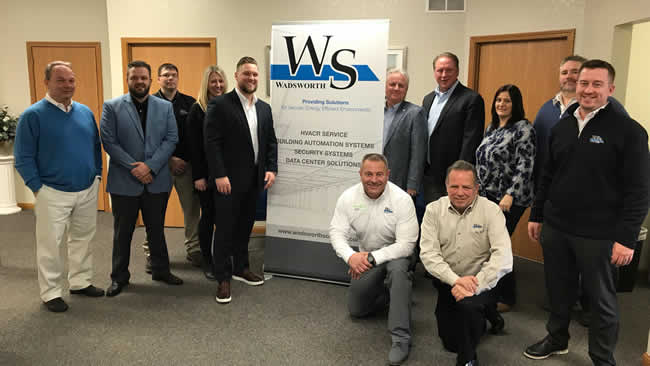
Being closer to the customer, more collaboration, fewer silos, and a customer-centric approach mean an integrated and holistic perspective for the team. What was the key to implementing that shift in terms of mindset and workflow?
Jeff Groat: Fixing culture was the first essential element. Building culture is one of our fortes. We took a step back and even let go of some well-performing salespeople whose approach didn’t align the culture we were creating.
I saw the same evolution happening at Schneider Electric, by the way, and can see that the company has also been transformed over the years with a focus on culture and diversity. A lot has changed compared to when I worked there.
Building a great culture and protecting it is critical. We have standards that we stick by, we have morals, and—at least as important—we have a vision.
Building systems integration is vital in a rapidly changing market
Facility owners increasingly want a data strategy driven and integrated, holistic view of their buildings. Along with all the new technologies, this has a severe impact on the industry of integrators, contractors, and others in the building automation space. What’s your view?
Jeff Groat: I never expected us to be where we are today. Technology has evolved very quickly.
IT and OT are coming together, and the main driver of the inflection point is 5G (Martin Feder)
I’m almost bewildered to see all of the things we do today. From biometrics, iris readers, and fingerprint and finger vein readers in building security to room controllers with built-in Zigbee connectivity in building automation, it’s all really taking off.
The impact on the industry is tremendous, and it’s far from over. We’ve entered some markets because of the opportunities that are coming with new technologies. The evolution of data centers is a prime example.
Concerning the impact on our industry, I always say that if you’re not a building systems integrator and, for instance, consider yourself a temperature controls contractor, you won’t be around in five years. There is no market with all the OEM coming in anymore. Our field-level control installations are a fraction of what they used to be.
A lot of companies haven’t even started developing the types of solutions that are possible since there are full IP solutions with field controllers all being on IP, mainly using BACnet over IP.
Does the fact that you’re a Master level EcoXpert business partner of Schneider Electric help you in staying updated and making decisions?
Jeff Groat: As a Master level EcoXpert I always get the feedback I need right away. When I need validation about a statement, the team at Schneider Electric tells me whether it’s always true, true in some situations, or completely false.
I also have a vast number of engineers in the office who are in tune with the community boards and what is going on. They read the bulletins and send them around. They pay close attention to it because they’re professionals and it’s what they need to do.
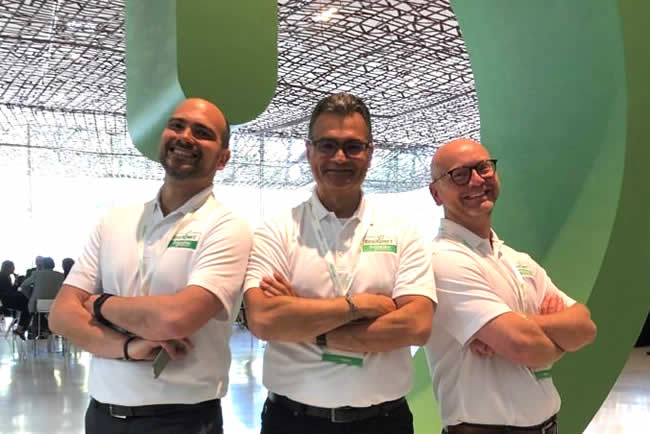
What a partnership program truly is about – listening and educating
Martin Feder: It works in the other direction too. Jeff and Wadsworth Solutions are exceptional in everything they do, and we need Master level partners like them to make EcoXpert succeed as well.
When we bring in someone like Jeff to meet other EcoXperts, he can educate and teach them, not only about the technologies, but also about the business and about the philosophy of understanding the customer’s customer. He can educate them about the need to go up that value chain by bringing customers opportunities and telling them that what they’ve been doing for the last 20 years will not sustain their business in the coming years.
When our business fundamentally changes in a few years, EcoXperts will become the consultants to the facility manager or the IT person and at the same time, the entity responsible for executing the actual installation and the technology (Martin Feder)
That’s how the communities of the EcoXpert program help us too. The EcoXpert program is not just a vehicle for Schneider Electric to have its partner network get its products and technology in the market; it’s a community and even a family of companies that end up educating each other.
That’s why we have different levels and the local and international EcoXpert meetings where we bring on our Master EcoXperts. They also educate us, as a manufacturer, on what is happening.
We call EcoXpert the partnership program because it is about partnerships in the truest sense of the word. Without our partners providing us with information, we might miss the boat, as has happened to major brands time and time again in history.
Just look at Kodak, Nokia, and Motorola—companies everyone mentions because they’re classic examples of what happens when you don’t listen.
5G, Generation Z and the next inflection point
Talking about missing the boat and listening, you both believe we’re at an inflection point. Why is that?
Martin Feder: We’re coming to the next significant change in the way that people behave, and generation Z will prove to be the next big issue. For businesses, it gets harder to engage and retain people in the organization.
Technology is starting to merge. As we talked about in the previous interview, IT and OT are coming together, and the main driver of the inflection point is 5G. When I spoke with Jeff about the reasons why Wadsworth Solutions decided to move into the data center communication world, he mentioned 5G.
Building systems are going to move more into an AV communication world where camera technology is linked to face recognition (Martin Feder)
Why 5G and the changing behavior and needs of new generations? For starters, 5G changes the way that things potentially start to communicate with each other. You can connect 4,000 points, and thus 4,000 physical devices to a 4G antenna in a square mile. But with a 5G mast, a square mile means over a million connection points. This is the level of connectivity that enables autonomous driving, vehicles communicating with each other at lightning speed for safety, and other really advanced use cases. You can imagine what the impact will be in the building environment. This technology enables a whole new range of applications.
Generation Z is exposed to things unheard of by previous generations—nap pods or the ability to walk into an office and sit wherever you like. The moment they sit down, their computer connects to the network. It recognizes who they are, what their preferences are, and even what their temperature settings are.
You could argue that offices are going to evolve into meeting points in a new paradigm in which everyone works from home, only dropping into the nearest office location when face-to-face interaction is needed.
The system will automatically choose a hot office now instead of a hot desk. It will be maintained by a facility management company that can configure things so that when you turn up, the system is expecting you with new building security possibilities. These are the kinds of applications we’re talking about with 5G.
Offices are going to evolve into meeting points in a new paradigm in which everyone works from home, only dropping into the nearest office location when face-to-face interaction is needed (Martin Feder)
And there’s more. Why is Jeff’s business so diverse, offering, among other things, security and CCTV? It’s because the audio-visual world is going to move very quickly into IoT. In fact, you could argue that building systems are going to move more into an AV communication world where camera technology is linked to face recognition. When you’re on someone’s premises, the system will work out who you are and offer all the appropriate benefits.
Why would you, for instance, go into a meeting room that happens to be in the sun and where you need an extra cooling load when you can rearrange the meeting in a heartbeat, and the system moves you to a different office? It will even lead you there using digitized signalization and location points so that it knows where you are. You see the scale at which it will impact the way we work and live, and thus our business.
5G and the rise of micro data centers
That’s indeed a substantial change as compared to today’s possibilities. Jeff, Martin paints a picture of hyper-personalized experiences for people in buildings here driven by the demands of Generation Z—which is already used to some innovations—and 5G. That will require lots of big data and especially rapid analysis, which brings me back to your data center business. 5G is one of the reasons you went into it. The volumes of data are expected to explode with, among other factors, 5G. Moreover, processing and analysis move to the edge. Are you already looking at micro data centers?
With 5G there will be so much data traffic that you will need to build edge or micro data centers underneath the towers because you won’t be able to afford to transfer all the data that will be available (Jeff Groat)
Jeff Groat: We’re already there, it’s happening right now. First, the pendulum had to swing one way. We did many small to medium-size data centers and a few large ones.
The past three years, things changed, and everyone went in the direction of mega data centers with the Amazons of this world and huge multi-facility sites on one campus housing all this data. At the same time, the small and even mid-market ones started to go away because the mega data centers acquired smaller partners to store their data with them.
With 5G, however, there will be so much data traffic that you will need to build edge or micro data centers underneath the towers because you won’t be able to afford to transfer all the data that will be available.
That is a significant shift from what we’ve seen over the last few years with the mega data centers. Yet, we knew that we would need to adjust our view and gradually move away from trying to sell million-dollar data centers toward selling more UPSs, PDUs and cooling to help build these small micro centers. And this is only the low-hanging fruit as the pendulum starts to swing in the other direction.
Martin Feder: If you think about these tiny micro centers, which you’ll need to have by each one of those antennas as Jeff says, they’ll need ample additional solutions.
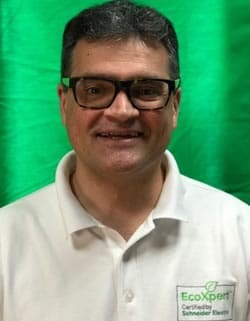
They will need cybersecurity, cooling, CCTV, surveillance, and connectivity. If you look at how Jeff is setting up his organization, it is precisely to be able to deliver integrated solutions in that scope, covering the needs of their clients in multiple areas, including areas that fall outside the traditional definition of building automation. For manufacturers like us, this is harder to do since we need to work with divisions with an individual P&L, even if we continuously create harmony between products and offerings.
That is also what EcoXpert is about—someone like Jeff, an expert in all and master in none, can work in a very flexible and cohesive way since the setup is different. Their employees realize that the more they can work together, the more profitable they can make an overall project, and the more they will benefit from it.
They have the agility and flexibility to come up with a bundled solution for each client, steer their business in the direction they see most fit, and make decisions on the needed additional skills they might get with more specializations and/or certifications.
Building System Integration – why building management is the digital hub
Martin Feder: EcoXperts are microcosms of fully functional IoT-delivery companies. If they have developed in the right direction by embracing new technologies, the companies that used to do temperature control and monitoring are now becoming the digital hubs of buildings.
BMS always used to be somewhat of a black box for many people, something no one understood or paid attention to until something didn’t work. When someone couldn’t get into the building, or it was too cold or too hot, it was always blamed on the building management people. This way, they were forced to understand all the different aspects of the building because they were always asked to integrate something new since everyone wanted to see everything on one platform.
With the Internet of Things, it is all coming back to one point. And that has a lot to do with culture, changing attitudes, and legislation. It’s the whole question of energy that now drives everything—the network design, the power, and even the amount of data.
Concerning those changing attitudes, I again point to Generation Z, which wants the environmental dimension to be respected and which displays different behavior and demands in terms of the way they live, work, and inform themselves. This generation is forcing us to work with companies like Jeff’s—companies that can take all the aspects of what we are doing and deliver it as an entire package with a full understanding of what the customers and their customers want.
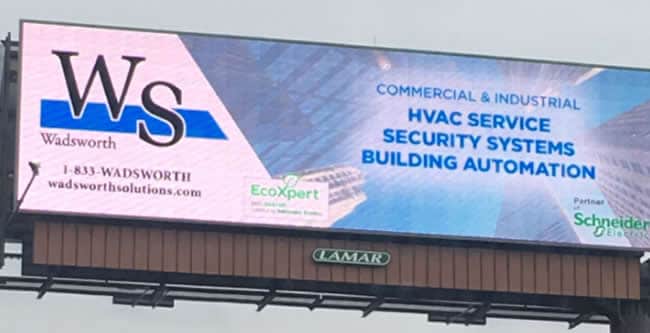
Integrations, data, and analytics – from system integrator to data partner and digital partner
More connectivity, more visibility into all these aspects of buildings, more data, and more decisions to make with all these new technologies also means more analytics for smarter decisions and systems.
Jeff Groat: Our clients, both on the building automation side and the CCTV side, are adopting analytics and artificial intelligence.
Analytics were available in the past, but they were cumbersome and slow. Edge technology has changed all of that. Take CCTV as an example—we’re doing a 600-camera security system in Cleveland International Airport with an analytics package on top of it. In the past, enabling decision making would have required bringing each image back in the cables into a central appliance and then disseminated. Now there’s a micro processing chip in every camera. The customer isn’t even looking at 600 cameras; the analytics tell the customer what to look at, based upon specific criteria.
The technology on the edge has become so good that it’s changing the way we do business. If we didn’t evolve, we would be in trouble.
Integrations will be critical. I wouldn’t even be able to guess where we are going to be in five years from now. That’s why I say it’s vital for companies like us to evolve.
The ability to offer the right integrations is essential to serve changing customer demands. A temperature-control system with an analytic package, for example, tells you what mechanical items need to be fixed and even provide the dollar value associated with the repair. With our integrations to work-order systems, it will even automatically shoot a message over to the work-order system and schedule the item for repair.
The opportunities offered by data, integrations, analytics, and so forth are tremendous. Moreover, the volumes of big data are growing. According to IDC, by 2025 the Global Datasphere will be around 175 zettabytes. Yet, at the same time, many organizations don’t know what to do with all this data. Would you say there is an opportunity to go to customers and say, “Look, this is what we can help you achieve with existing and other, new data” since there’s still quite some work regarding achieving data maturity within organizations?
Martin Feder: I agree, and the main reasons why it hasn’t fully happened goes back to the BMS days when no one understood BMS, and they had all this data but no idea what to do with it.
It’s true that we—both BMS manufacturers and BMS EcoXperts—never really exploited the opportunities back then either. We could have educated people on how to use data much more effectively. Yet, there is a change, and that’s also where Jeff and companies like Wadsworth Solutions make the difference. When they go to the clients with whom they’ve developed a relationship, they can say they can help them leverage their data better with the services they propose.
Building owners cannot interpret the data as we see with our Advisor platform. EcoXperts like Wadsworth are fundamental here because they can add the value in taking data, analyzing it, and doing something with it. And I think that Jeff is already doing that with Building Advisor.
Jeff Groat: Absolutely, and I would even take it a step further. We’re not just data partners, we’re digital partners with our clients, and that includes connectivity as well.
You need the mechanisms in place to read the information inexpensively. And this is a matter of evolving as well. We forced ourselves to step outside our comfort zone to learn new platforms and forms of communication. We need to do this so we can be the experts clients count on. They also expect that and are far more educated regarding technology than they used to be. They understand the digital world.
More than a data partner but a digital partner that’s also covering connectivity: doesn’t that mean you encounter new types of competitors like some of the larger digital players?
Jeff Groat: That’s what I intended to say indeed. I see some large companies that are trying to find a niche in our market.
They believe they can do it but haven’t yet figured out how. But we do expect some to make progress. What’s different is the fact that the types of technologies we’re touching are unique. Not everyone has a security system that can pop up video within their building automation system, for instance. There are pieces and functions that are necessary in the industry, but which the big players haven’t understood.
Building System Integration EcoXperts – Masters share their knowledge
You both mentioned several benefits of the EcoXpert program, having a Master level certification and also how you need each other—about how EcoXpert is a real partnership. Is this what sets the EcoXpert program apart?
Martin Feder: We could have just had a partner network as some companies do. And then you can work with these partners, inform them, learn a little bit from them and so on.
Yet, the EcoXpert global program has opened many more dimensions for us. It has opened up the community beyond the building management group. You have people like Jeff who realize they can also bring other skills on board through additional certifications. Because of the exposure of a controlled program, they’re able to recognize that by adding bits and pieces to it, they add value to their business.
Yet, above all, they add value back to us. If we wouldn’t have created the EcoXpert program, Jeff would still be doing what he does. However, we, as a company, and—more importantly—our other EcoXperts wouldn’t be able to benefit from it since Jeff wouldn’t have any sort of platform on which to share his knowledge with EcoXpert partners around the globe.
As said earlier, I think the EcoXperts are more agile than we, as a manufacturer, can be. That said, we are very agile in the way we respond in terms of the design of our technology, for instance. Our teams are building and designing products that are so flexible within themselves because, with the acceleration of technologies, we need to make our systems open, flexible, adaptable, programmable, and configurable.
EcoXperts like Jeff and Wadsworth Solutions will be the ones that go in, do the job, get out, and get into the next project while continuing to provide the services. Because they’ll keep their customers for life, a goal that is a big part of the philosophy of the EcoXpert program.
When our business fundamentally changes in a few years, EcoXperts will become the consultants to the facility manager or the IT person and at the same time, the entity responsible for executing the actual installation and the technology. And you can see how Jeff has balanced his business to move further and further in that direction at a speed we can’t have as a manufacturer.
Jeff Groat: From my side, after 25 years of being in this business I really cannot fathom myself doing anything other than working with Schneider Electric for the rest of my life as they have been such a breath of fresh air when it comes to driving technology, driving connectivity, and building ownership.
They’re our strategic partner for end users. I never thought we’d get to this point, but we’re so pleased with where we sit today that we know that Schneider will always be a leader—in technology and in building solutions. There are a lot of visions about where we could be and are going to be, but all I know is that every single year we get better at what we’re doing by being an EcoXpert partner of Schneider Electric.
And what has been the main benefit for Wadsworth of being a Master level EcoXpert?
Jeff Groat: There are many benefits to being a Master Level EcoXpert, including reduced purchasing multipliers, opportunities to work on Schneider Electric national accounts, co-branding, and special treatment in tech support.
That special treatment is Schneider Electric’s way of saying we put Masters at the top of the list and give them the benefit of the doubt, knowing that they won’t come with basic questions.
However, most importantly, Masters are granted access to the leadership of Schneider Electric, and that is unprecedented in our industry and a huge benefit.
Gentlemen, thank you for your time and good luck in making more EcoXperts aware of the impact of the inflection point we’re at.
Disclosure: this is a sponsored post in the scope of the commercial collaboration between i-SCOOP and Schneider Electric, containing links to solutions and the partner program of Schneider Electric. All images are property and courtesy of Schneider Electric or Wadsworth Solutions with the exception of the top image – ShutterStock copyright urbans

